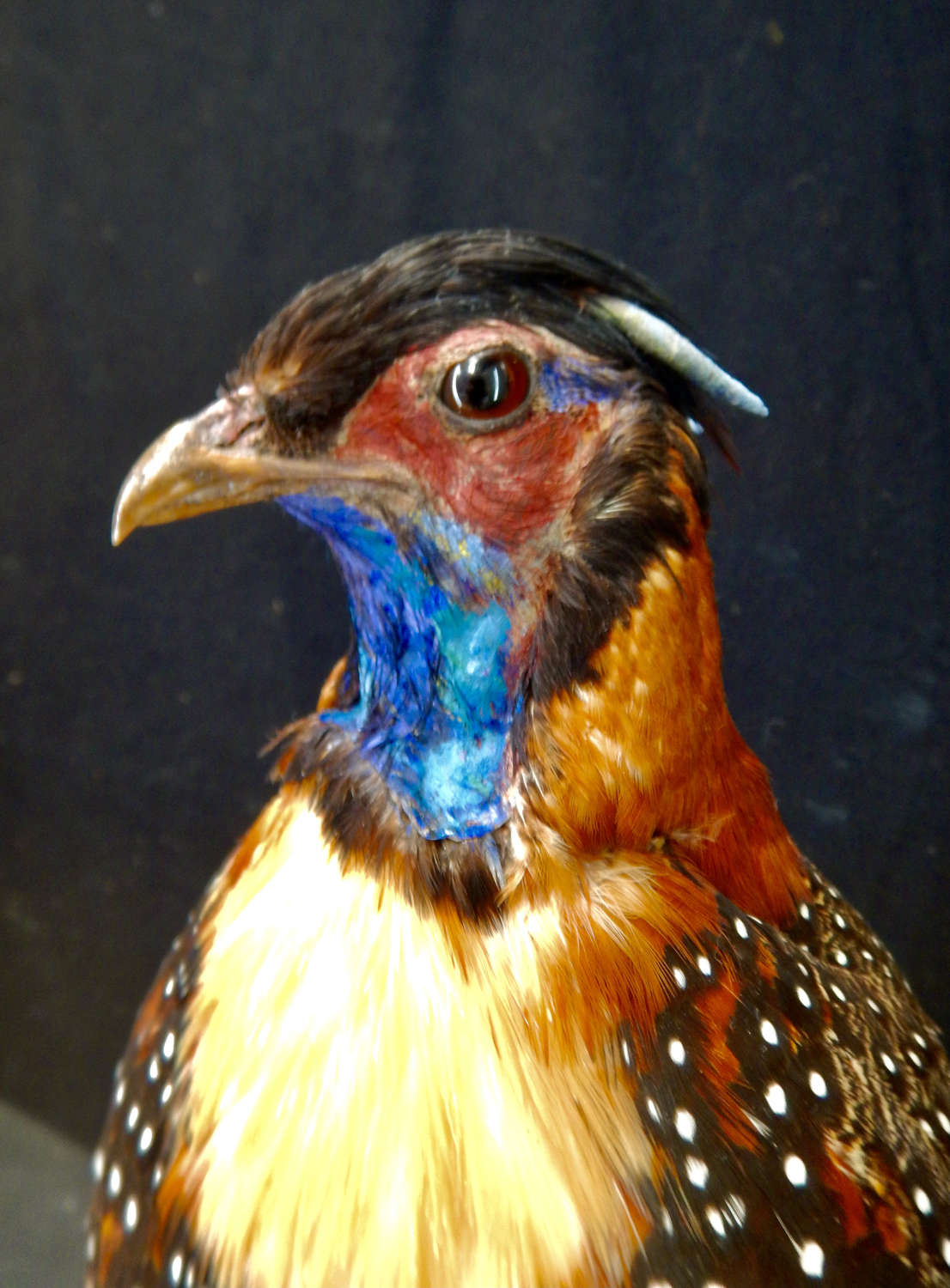


























Antique Western Tragopan Pair - Horned Pheasant
Code: TX/80
PAIR Antique Western Tragopan Pair - Antique Irish Taxidermy - The Horned Pheasant, Tragopan Melanocephalus - TX1/80
Words can hardly describe the superb plumage of these majestic antique birds - the male with horns and an extendable, showy wattle or 'throat bag'.
This gorgeous paired specimens hail from a Taxidermy collection within an old Irish Country House, where we managed to purchase the whole collection - this mount is a great example from around 1900. We collected almost two dozen specimens of pheasants alone - a few have already been sold to collectors on our books before we managed to list them. Sadly, this gorgeous pair needed a lot of cleaning as both the male and his partner had been stored in a broken glass case for tens of years and were a murky grey rather than the wonderful normal colouring we can now see. The original base for the mount of these birds had deteriorated, so a new one was made and replacement paper maché applied over the turf / peat blocks they were attached to.
This Antique Male Western Tragopan Pleasant has amazing horns and some the most gorgeous colouring in the bird kingdom. The pair are true museum pieces in every sense, they were produced - if that is the correct word by - Williamson and Sons, Naturalists, of 2 Dame Street, Dublin. Both birds have all the hallmarks of their work with the use of dried peat blocks under the papermaché fake rocks on the base and the remnants of the original label which was visible on the broken glass of the case.
Tragopan is a now-endangered bird genus in the pheasant family Phasianidae. Members of the genus are commonly called "Horned Pheasants" because males have two brightly colored, fleshy horns on their head that can be erected during courtship displays. The habit of tragopans to nest in trees is unique among the pheasant family unlike other pheasants, which usually nest on the ground. When tragopans nest in trees they use either existing holes or use the old nest of another large bird. Equipped with short, stout bills, tragopans are known to forage on the ground and on trees. The destruction and fragmentation of their habitat coupled with hunting threatens the survival of these stocky, blunt-tailed birds.
A distinctive group of pheasants, the tragopansNorth Indian Habitat
reside in India, Nepal, Pakistan, Bhutan and China’s montane Himalayan forests. Their name originates from the union of two Greek words — tragus for goat, and pan, for the half-man, half-goat Greek god. The birds are also known as horned pheasants as the males have two fleshy, erect horns on their heads. During their elaborate courtship, the striking, white-spotted males use the ‘horns’ and the colourful, inflatable skin on their faces and throats to impress drab-coloured females.
The male tragopans, or horned pheasants (Tragopan species), of Asia also, are among the world’s most colourful birds. They show a bright apron of flesh under the bill during courtship, and short fleshy horns. The white-spotted plumage may be mainly red, yellow, or grey.
Dimensions are 55cm / 22" high, 48cm / 19" wide and around 41cm or 16"" deep. All measurements include the stand. The weight is just under 3.5 kilos or 7.5Lb.
